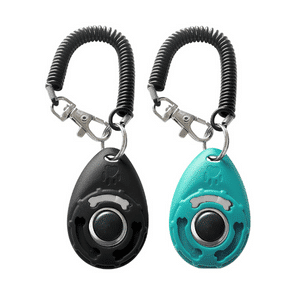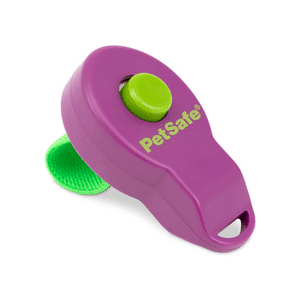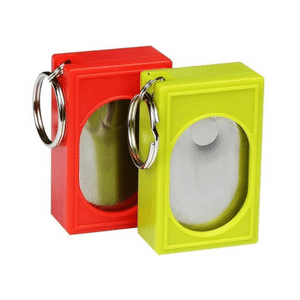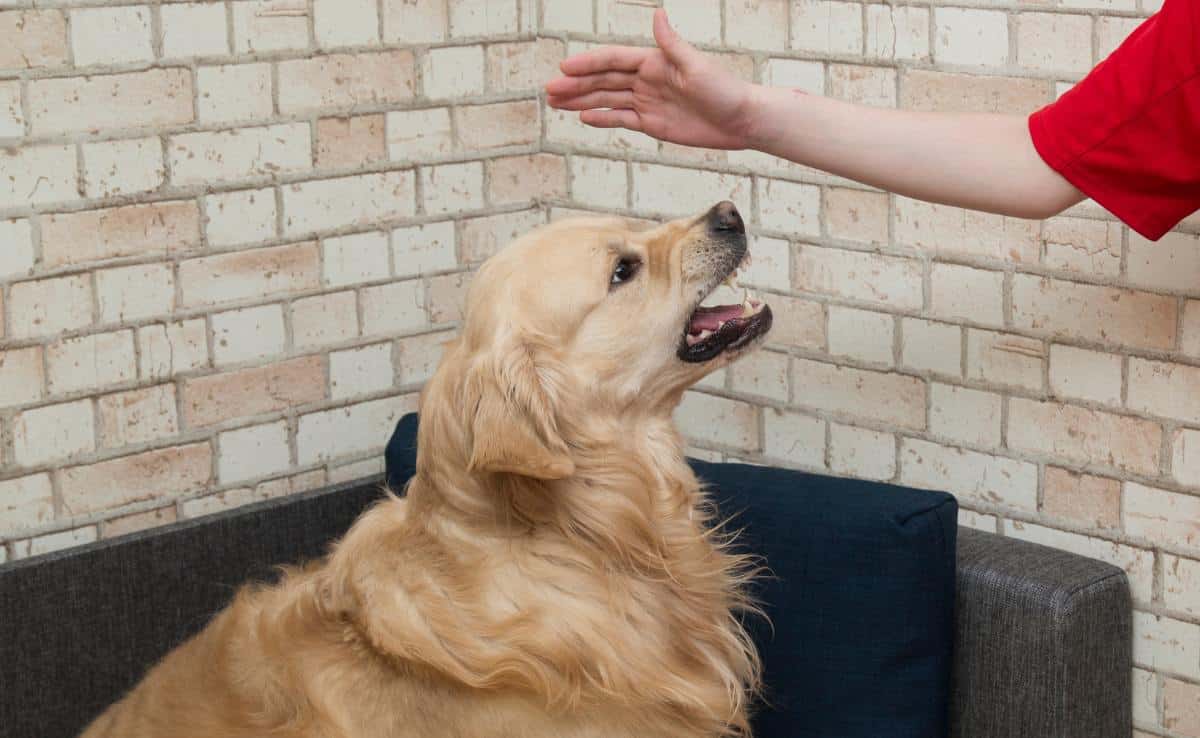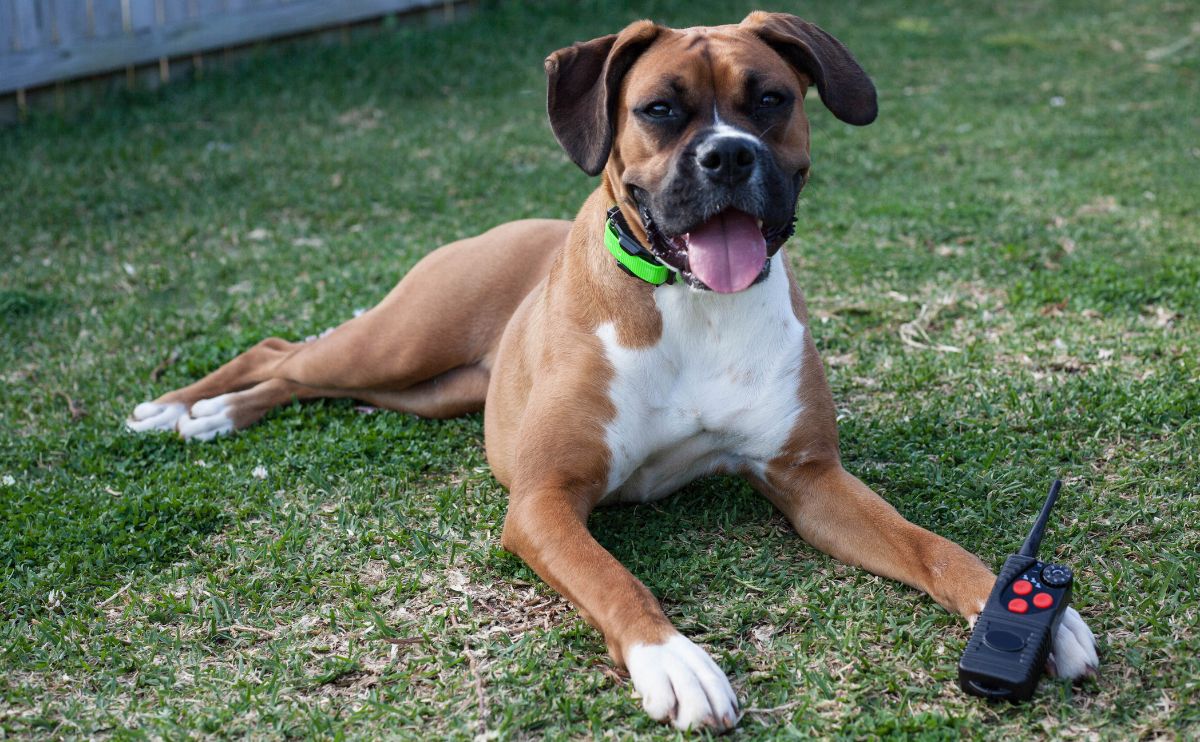Clicker Training For Dogs: 3 Best Clickers & How It Works
When you purchase through links on our site, we may earn a commission. Here’s how it works.

If you’re looking into the best way to train your puppy or adult dog, you’ve likely come across the term “clicker training” and are wondering how it works. A lot of trainers and dog owners say clicker training is an easy and highly successful positive-reinforcement training method for many dogs. But which clicker is the right choice for you and your pup? We’ve spent hours researching, including hand-testing, to narrow it down to three to help you find the best clickers on the market for training.
Table of Contents
What Is The Purpose Of A Clicker In Dog Training?
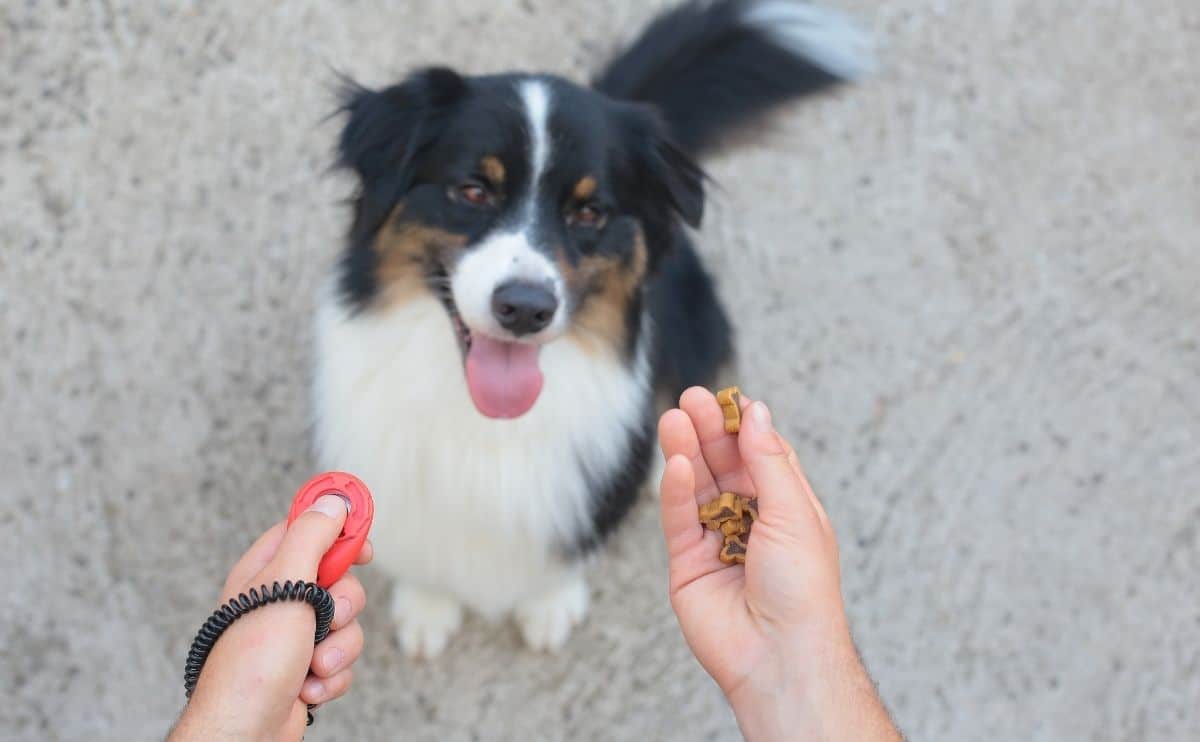
Clicker dog training is a popular reward-based method of training your puppy or adult dog using positive reinforcement. The goal is for your pup to quickly recognize the desired behavior you expect from him and repeat it moving forward. In clicker training, you use a small handheld device called a clicker that makes an audible clicking sound when you press the button.
This clicking sound replaces a “marker word” you’d use to tell your pup he’s done something right, like “good” or “yes.” Many people find it a better way to communicate and get your dog’s attention than using marker words because the click is a distinctive sound.
An integral part of clicker training (also called mark and reward training) is the reward in the form of treats. This teaches your dog that the behavior and associated click will result in a yummy reward for him. As you might imagine, it’s a very motivating factor for your dog to repeat the positive behavior. (We’ve added tips for how to clicker train below).
Clicker training and other variations of positive reinforcement training are hugely popular because it trains your dog to focus on good behaviors rather than focusing on what he’s doing wrong and then being corrected for unwanted behavior (aka aversive training). This positive reinforcement puts all the emphasis on your pup on what to do right. Research has even shown that dogs are less stressed and perform better with positive reinforcement training vs aversive training.
Best Dog Clickers
We’ve chosen our picks for the best dog-training clickers to help you get started. We chose these based on performance and reliability, ease of use, pricing, and customer feedback.
Best Overall: HoAoOo Pet Training Clicker
The HoAoOo dog training clicker is “hands down” the best of the three clickers we tested. It’s not only easy to carry on walks with the handy wrist strap but is also the loudest clicker by far. It’s well constructed and has a loud enough (and consistent) clicking sound to get your pup’s attention indoors or out. The clicker also fits comfortably in your palm, and the large button makes it quick and simple to click when needed. You also get two clickers for a very reasonable price. Dog trainers and pet parents give this clicker a big thumbs up, and we agree. While it’s slightly more expensive, it’s much higher quality.
Price
$4.99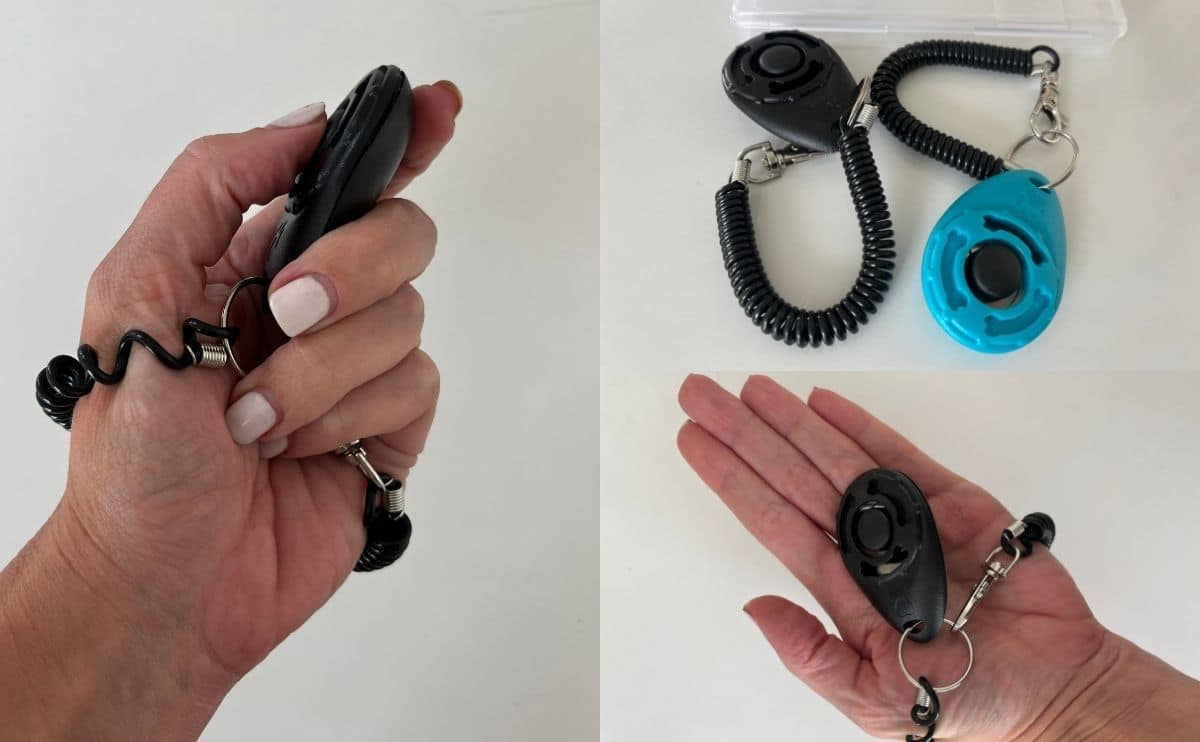
Best For Sound-Sensitive Dogs: PetSafe Clik-R Dog Clicker
This PetSafe dog clicker has an ergonomic design with a comfortable and convenient finger strap, making it easy to hold and arming you for a quick click. The clicking sound isn’t quite as loud as the HoAoOo or some other clickers, which could be a good option if your dog is more on the timid side. Although some users say, it’s too quiet if you’re around traffic or noisy areas. After road testing this on a loud street, we can attest that the click is difficult to hear over sirens, loud trucks, and city ambiance. But for indoors, it works well. It’s lightweight and has a hole to attach it to your leash or wrist (but the attachment is not included).
Price
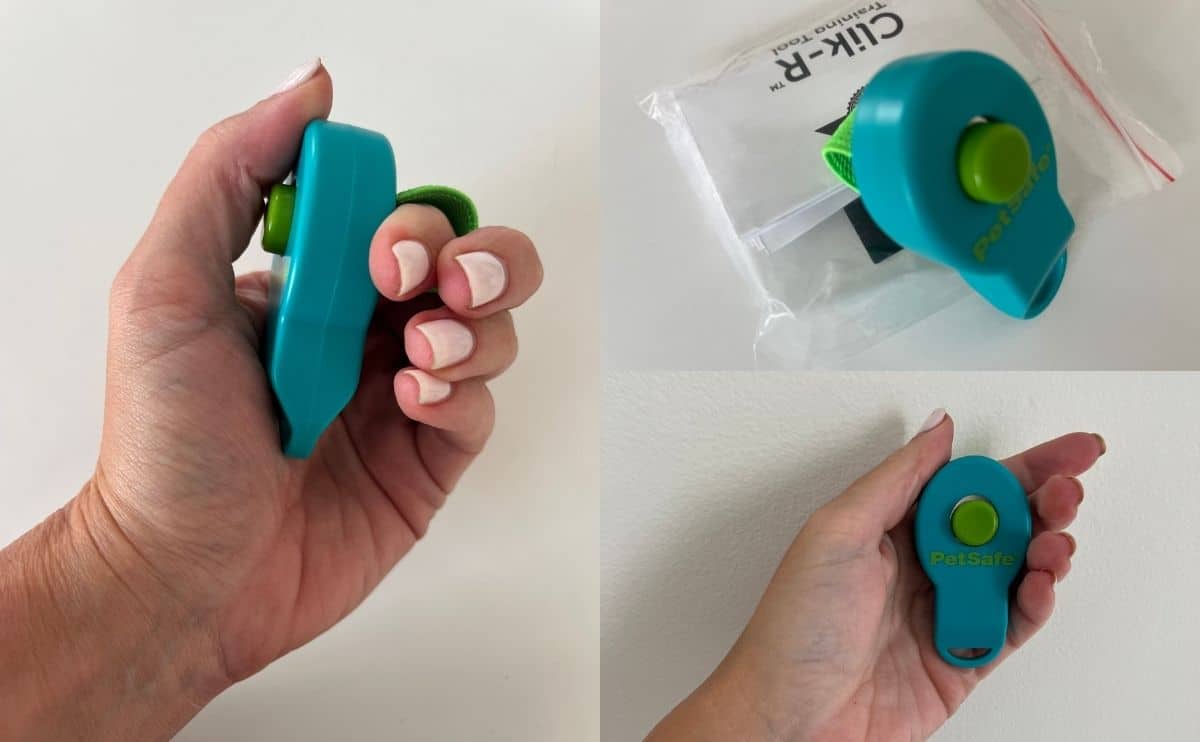
Budget: CRMADA Box Training Clickers
Box clickers are old-school but classic devices that some trainers and owners prefer. With a sturdy metal design, this CRMADA clicker is sturdy and has a bigger area to push with your thumb. Instead of pushing a small button, you press down on the metal sheet within the box to create a clicking sound. The rectangular box fits into your hand and has a split key ring to hook onto your keys or leash. Some people find it less comfortable than more standard pearl-shaped clickers, and, having tried it ourselves, we agree. But you get two clickers for a nearly unbeatable price which is why it’s our top budget pick.
Price
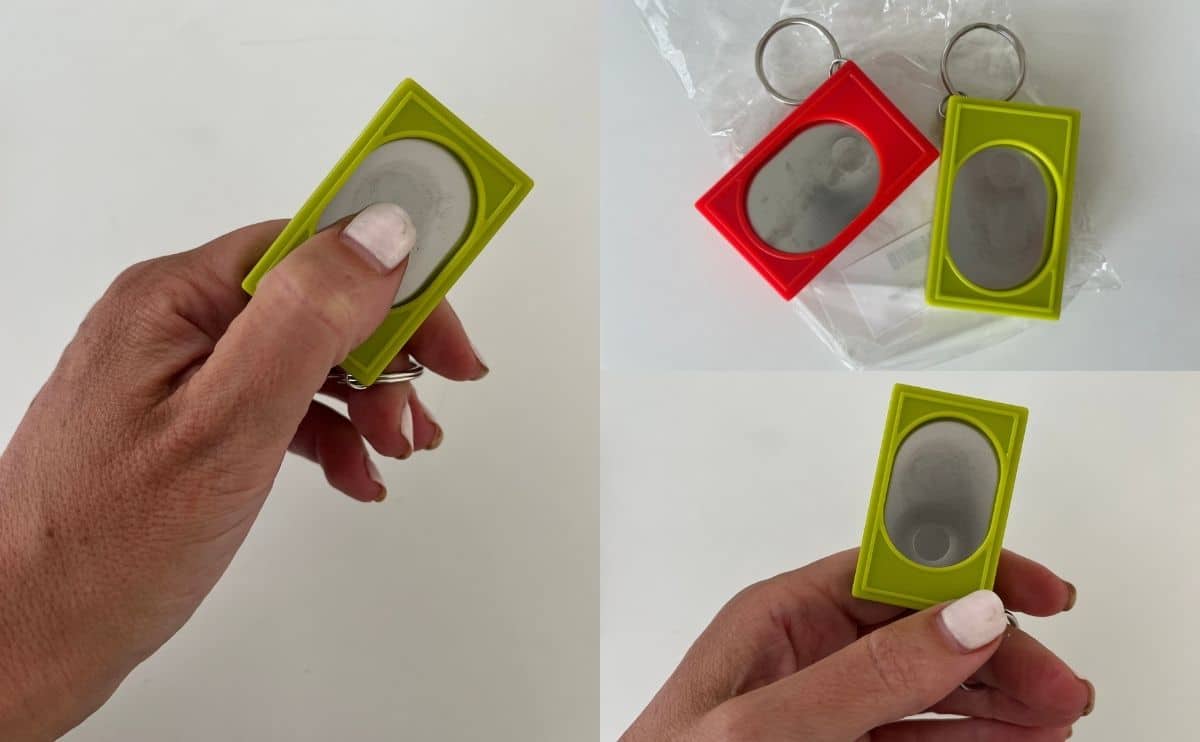
Our Head-To-Head Clicker Showdown (Video)
We hand-tested all three clickers to find out how well they feel in the hand, sound, and actually work. This firsthand video demonstrates how they work, and their key features. You can also hear for yourself the difference in sound with each device.
How To Clicker Train A Dog
The most important thing to remember is that timing and staying consistent are the keys to clicker training. To be successful, you need to immediately mark every positive behavior that you’re working on with the clicker, followed by a treat. If your dog isn’t motivated by food, you could offer a different reward, like a favorite toy (although small training treats are usually the best). But the key is to follow up every click with a reward.
Two other important things to keep in mind: keep training sessions short (no more than 15 minutes) and be sure to give your dog lots of praise for doing a good job. Once you’re ready to start training, make sure you’re comfortable with your clicker and that you have enough small treats on hand. Here are some starter steps and other important information about how to use a clicker for dog training.
Introduce Your Dog To The Clicker

- Choose a quiet location in your home with no distractions.
- Have your clicker in one hand and a treat in the other, keeping both hands at your side.
- Click once and immediately reward.
- Repeat this several times until your pup begins to associate the click with the reward. Tip: you’ll know he’s getting the hang of it if you click when he’s not paying attention to you, and the click makes him look at you (because he wants his treat!).
Teaching Basic Commands With A Clicker
- Decide which command you want to work on first. Sit is always a good starting place.
- You can gently encourage your dog to sit at first.
- The moment your dog sits, click and reward.
- Repeat this process until your dog catches on (it can take a dog anywhere from 5-20 repetitions to catch on, depending on the dog and the difficulty of the skill you’re teaching).
For some skills, you can use the treat as a lure to get your dog to understand how you want him to move (e.g., turning around). Once he performs the action, then click and reward. But only use the treat as a lure a few times. Repeat your hand movement without the treat in your hand, and once he turns around, then click and reward. This can become a natural hand signal for the desired skill.
Transitioning To Vocal Commands
- Once your dog is performing the desired action every time, you can begin adding your vocal command (e.g., “sit” or “shake”).
- Add your verbal cue when you click and then reward. Repeat this process.
- You can then transition to only clicking and rewarding when your dog performs the action on your verbal command.
- When your dog performs the skill every time (and in different locations) on your verbal cue, you’re ready to start phasing out the clicker and treats.
Capturing Good Behavior
While clicker training is a great way to teach your pup commands (and tricks), it’s also helpful as an ongoing way to reinforce positive behaviors your dog exhibits during his day. Trainers call this method “capturing.” Of course, this takes a lot of attention on your part to mark (click) and reward when your dog is doing something right, but it’s a great way for him to learn what behavior is good outside of a training session. A few common examples of when you can capture good behavior by clicking and rewarding include:
- When your dog doesn’t immediately jump up on a visitor in your house.
- When your pup doesn’t beg at the dinner table.
- Not barking or lunging toward another dog.
Shaping Behaviors With A Clicker
Yet another benefit of clicker training involves what’s called “shaping” behaviors. Shaping involves breaking down the training of a certain behavior into smaller progressive steps (e.g., lying down in his bed, going to his crate, retrieving a ball, etc.) This takes a bit more skill and patience on your part, and you’ll need to come up with a plan on how you want to break down the steps.
As with basic training, you’ll need to click and reward with every step, repeating that individual step until your pup understands what you want. For example, if you want to train your dog to go to his crate and stay there on command, you could follow this progression:
- Start by clicking and rewarding when your dog walks toward his crate.
- Then, you can move on to when your pup sticks his head in his crate.
- The next step could be when he fully gets in his crate.
- And the final step is to train him to stay in his crate.
Shaping is an excellent way to make learning fun for your pup, with easier steps to achieve and master along the way. It also helps to avoid frustration or confusion when training more complex behaviors.
How Do I Perfect My Clicking Method? (Video)
This brief video from a professional dog trainer gives you a good visual idea of how to use the clicker and reward your dog (and other helpful tips) when you’re just starting out.
Our Top Picks For Best Clickers
Now that you’ve seen an overview of the clickers, how they work, and how to use them, here’s a recap of our top favorites by category. You can also see in the photo below how they come packaged from Amazon. The top pick HoAoOo comes in a sturdy case, so there should be less damage in transit. The CRMADA Box clicker and PetSafe Clik-R Dog Clicker come in a thin plastic bag with instructions. Even if you’re not a two-human household, having at least two clickers on hand is helpful so you can keep one with your dog’s leash and one to use indoors (or as a backup).
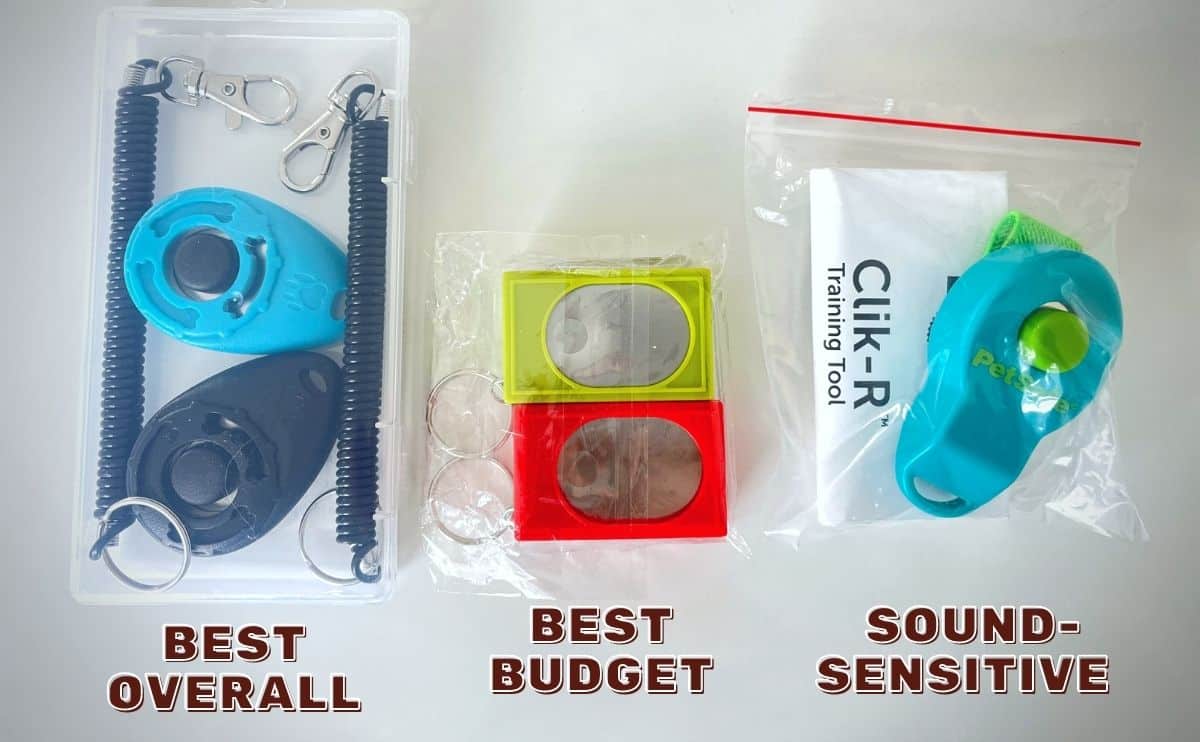
| HoAoOo | CRMADA Box | PetSafe Clik-R |
| View on Amazon | View on Amazon | View on Amazon |
Need Training Treats And A Portable Pouch?
Since clicker training is reward-based, you’ll want to make sure you have some small, low-calorie, and healthy training treats on hand. We recommend Zuke’s Mini Naturals, which are less than three calories per treat and contain real meat. Another excellent option is Bixbi’s Pocket Trainers, which are all-natural and grain-free.
And if you need a treat pouch, we recommend the RoyalCare Dog Treat Pouch. This lightweight silicone pouch is flexible yet sturdy and can fit 10 ounces of treats. It has a side clip you can attach to your pants and also has a magnetic closure, making it easy to quickly access treats with one hand.
Do You Need Dog Training Assistance?
Clicker training can seem like a big undertaking if you don’t have a lot of time or you’re entirely new to dog training. Once you and your pup get the hang of it, it’s very rewarding for both of you. But if you don’t feel like you have the ability to devote the time and patience needed, you can always seek reinforcement from a professional dog trainer.
Instead of paying a ton of money for an in-person dog trainer, you have some excellent affordable options. See our reviews of the best online dog training courses and dog training apps to find assistance if you need it. Some of these options even give you virtual access to professional dog trainers.
